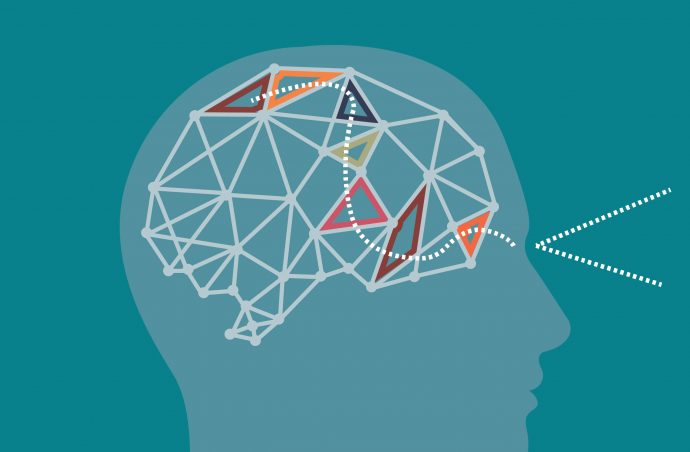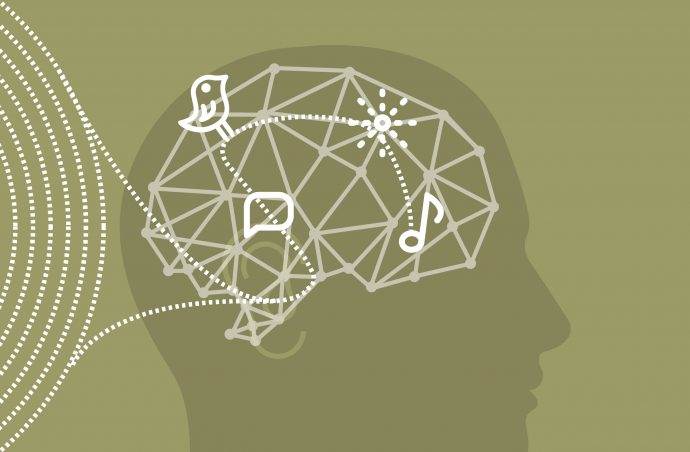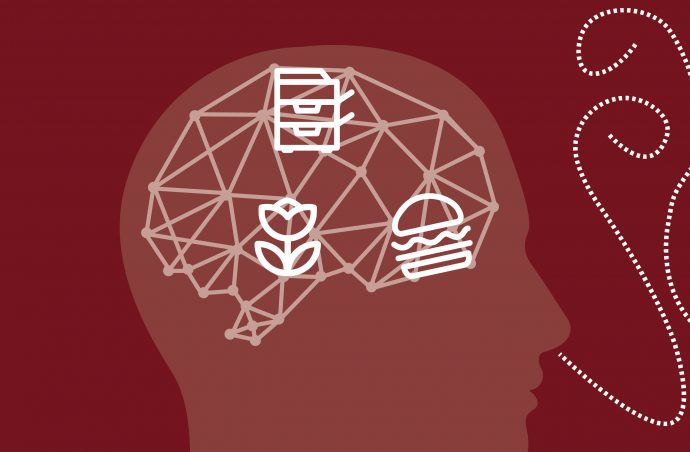PLASTARC’s Melissa Marsh and Cassie Hackel present three neuroscience concepts that can teach us about how we can improve the spaces we spend the most time in, including the workplace.

This fall, Nobel Prizes were awarded for advances made in physics, chemistry, medicine, and economic sciences (among others). News outlets everywhere, as they always do, touted the recipients of these venerated awards, and people around the world found themselves fascinated by the intersection of science with their day-to-day experiences.
The science nerds here at PLASTARC are certainly no exception—our organization was founded on the belief that science has everything to do with architecture and how people experience it. Feeling inspired by Nobel nominees past, present, and future this fall, we present three concepts from the world of neuroscience and what they can teach us about how we interact with—and might improve—the spaces and places we visit every day.
Circadian Rhythm
Scientists have been studying the circadian rhythm of living organisms for decades, but this year’s Nobel Prize in Physiology or Medicine was awarded to Jeffrey C. Hall, Michael Rosbash, and Michael W. Young for discovering the molecular mechanisms that control it. The team dug deeply into the processes behind our circadian rhythm, and isolated a gene that controls the regular production and degradation of a protein that is integral to its “clockwork.” On a 24-hour cycle, the brains of humans (and many other organisms) operate an inner clock that influences our physiology. It informs when we release sleep hormones, when we are most active and able to focus, our alertness, and our body temperature, among other things. The researchers also discovered that circadian rhythm generally operates on the same schedule independent of external conditions—so, as the Prize’s press release puts it, “chronic misalignment between our lifestyle and the rhythm dictated by our inner timekeeper is associated with increased risk for various diseases.”

PLASTARC Recommends
In the modern workplace, we are often shielded from the daylight that helps us align with our circadian rhythm—though thankfully that is starting to change, thanks in part to more publicized research. The General Services Administration, for example, which oversees federal workplaces, conducted a study to determine whether simulating natural light in the workplace would contribute to better alignment with circadian rhythm and, by extension, increased employee well-being. Participants wore Daysimeters to track their light exposure as well as physiological markers like heart rate, stress, and sleep cycles. The study found that providing desk lamps that mimic natural light correlated with better sleep habits, lower stress rates, and less sleepiness at the office.
Last year, we presented at the Global Coworking Unconference Conference about the powerful effects of daylight on building occupants, and compared the costs of designing a daylit space to years of lost employee productivity and happiness—and even, potentially, more serious medical problems over time. All available evidence compels us to advise that every office ensure natural light (or an adequate substitute) is visible from every employee’s work station.
It also bears emphasizing that when people feel good in their workplace, they want to be there—and happy employees, as you might have guessed, actually are more productive employees. Especially when combined with other multisensory inputs, providing natural light is one surefire way to help workers feel more in tune with themselves and their work.
Brain “GPS”
2014 Nobel Prize-winning research by John O’Keefe, May-Britt Moser, and Edvard I. Moser sheds another kind of light (pun intended) on how we relate to space. Back in 1971, O’Keefe identified types of nerve cells in the hippocampus area of a rat’s brain that became activated based on the rat’s location in a room. He dubbed these “place cells.” In 2005, May-Britt Moser and Edvard I. Moser discovered “grid cells,” which, together with place cells, form circuits to create a coordinate system. This system facilitates navigation not only by helping us to accurately position ourselves in a space and establish our path forward, but also by generating and storing maps of spaces we’ve been in before. The findings of O’Keefe, Moser, and Moser revealed that what we might have taken before to be a more simplistic “sense of direction” is really a sophisticated network of sensory inputs being manipulated by a whole system of cellular helpers.

PLASTARC Recommends
Now that we know a bit more about the “inner GPS” that makes it possible to orient ourselves within a space, we can better design spaces to work with our brains’ innate positioning systems. Take wayfinding elements, which come in many formats and can bring a variety of fringe benefits. One of our favorite examples of such elements is art. Especially in workplaces that are otherwise liable to feel like a bland maze of desks, hallways, and doors, thoughtfully chosen works of art act as memorable landmarks for the brains of first-time visitors and full-time employees alike. Be they paintings on the wall, sculptures on pedestals, or objets d’art on shelves or windowsills, attractive environmental cues make navigating a space easier for the wayfinder, and come in handy when giving verbal directions. (Read more about how to choose the best art for your workplace.)
Another way we can cater to our interior GPS is by avoiding a same-same look throughout the workplace and instead differentiating spaces aesthetically and functionally. Activity-based working (ABW) layouts are prime examples of this concept, as they encourage employees to move from setting to setting depending on what their work demands: quiet, cozy spaces for concentration; big rooms with comfortable seating for meetings; communal spaces that offer food, drink, and the opportunity for informal chats; etc. Not only do ABW layouts help us to easily establish where we are and build a map of our surroundings, they also provide endless opportunities for incorporating other multi-sensory elements that support mental, physical, and social health in the workplace.

Mirror Neurons
Mirror neurons were first discovered in the 1990s, when neuroscientist Giacomo Rizzolatti’s team at the University of Parma found that individual neurons in the brains of macaque monkeys fired both when the monkeys grabbed an object, and also when they watched another monkey grab the same object. Researchers have since recorded similar results in humans: “motor-evoked potentials” (signals that a muscle is preparing to move) can be seen both when participants watch a researcher grasp an object, and when they themselves grasp it.
Further findings suggest that mirror neurons can interpret intentions as well as actions—so seeing someone pick up a teacup to drink from it, for example, can set off a different reaction than seeing them pick up a teacup to clear a table. Interestingly, mirror neurons also seem to “react” to emotional and sensory stimuli, not just motor functions. We notice this when we see a stranger stub their toe, and we wince in sympathy. Thus, mirror neurons play a role in building healthy social and empathetic responses.
PLASTARC Recommends
Mirror neurons present a case for, among other design and workplace culture choices, keeping lines of sight open in the office. Ideally, all workers should have easy visual access to one another from their desks.
While our neural mechanisms are not solely responsible for our learning how to perform the actions we observe, they do play a part. If we are able to see our colleagues carry out their tasks, we are not only able to better understand and appreciate the variety of jobs being done around us, we can also more readily develop empathic bonds with one another. Building social and professional understanding between colleagues through visual access can help supplement formal training and allow new employees to pick up the routines and atmosphere of any given workplace more quickly. (Read more about how mirror neurons can help us design better built environments in our write-up of the 2015 event “Sculpting the Architectural Mind: Neuroscience and the Education of an Architect,” a collaboration of the Academy of Neuroscience for Architecture, ANFA, and the Pratt Institute School of Architecture.)
Rather than blocking each other out with opaque walls in the name of privacy, we can divide spaces using transparent materials, use low or no partitions between work spaces, and design corridors that allow for visual access. These measures leverage our cognitive propensity to build personal connections between what we see, what we do, how we feel, and what we know. In addition, studies show that people in spaces bordered by transparent glass walls (or no walls at all) feel more energized than relaxed while working, which points to a performance advantage as well. (We presented on this topic at the 2016 ANFA conference.) In a fabulous win-win, visibility-geared design also often allows for more natural light to reach more occupants, better aligning their environment with their circadian rhythms.

Keeping Science On Our Minds
During the Nobel season and all year round, PLASTARC advocates for the employment of science—social, natural, formal, and all types in between—in the planning and maintenance of our shared built environments. For staying in the know about brain-related news that affects our daily lives, we love The McGovern Institute for Brain Research at MIT; subscribe to their newsletter for a regular dose of what’s happening in neuroscience now. To make some great science connections off the internet, come to a program hosted by The Social Science and Architecture Committee of the American Institute of Architects New York chapter. We’ll see you there.


